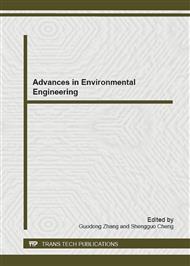[1]
Lovegrove B G. The influence of climate on the basal metabolic rate of small mammals:aslow -fast metabolic continuum.Comp.Phusiol. vol.173B(2003),pp.87-112.
DOI: 10.1007/s00360-002-0309-5
Google Scholar
[2]
Shaun FM, Kazuhiro N, Christopher JM. Central control of thermogenesis in mammals. Exp Physiol. vol.93 (2008),p.773–797.
Google Scholar
[3]
Maldonado K, Bozinovic F, Cavieres G,et al.Phenotypic flexibility in basal metabolic rate is associated with rainfall variability among populations of rufous-collared sparrow. Zoology (Jena). vol.115 (2012),pp.128-33.
DOI: 10.1016/j.zool.2011.09.005
Google Scholar
[4]
Książek A, Konarzewski M. Effect of dietary restriction on immune response of laboratory mice divergently selected for basal metabolic rate. Physiol Biochem Zool. vol.85 (2012),pp.51-61.
DOI: 10.1086/663696
Google Scholar
[5]
Lovegrove BG, Perrin MR, Brown M.The allometry of parrot BMR: seasonal data for the Greater Vasa Parrot, Coracopsis vasa, from Madagascar. J Comp Physiol B. vol.181 (2011), pp.1075-87.
DOI: 10.1007/s00360-011-0590-2
Google Scholar
[6]
Denis PB, François P, François H. Effects of ingesting [13C]glucose early or late into cold exposure on substrate utilization. J .Appl Physiol. vol.109 (2010), p.654–662.
Google Scholar
[7]
Laurent V, Robert C, Stephen G. Y,et al. Heart-type Fatty Acid-binding Protein Is Essential for Efficient Brown Adipose Tissue Fatty Acid Oxidation and Cold Tolerance. J. Biol Chem. vol.286(2011), p.380–390.
DOI: 10.1074/jbc.m110.184754
Google Scholar
[8]
McNab BK. Energetics, body size and the limits to endotherms.J. Zool. Lond. vol.199(1983), p.1–29.
Google Scholar
[9]
Bicudo EJPW, Bianco AC, Vianna CR. Adaptive thermogenesis in hummingbirds. J. Exp. Biol. vol.205(2002), pp.2267-2273.
DOI: 10.1242/jeb.205.15.2267
Google Scholar
[10]
Douglas SG. Effects of metabolic level on the body size scaling of metabolic rate in birds and mammals. Proc Biol Sci. vol.275(2008), p.1405–1410.
DOI: 10.1098/rspb.2008.0118
Google Scholar


